Wheels have the single biggest effect on how a bike performs and feels on the road. Comfort, speed and handling are largely in the hands of your hoops. Here’s the Merlin guide to factory built road wheels.
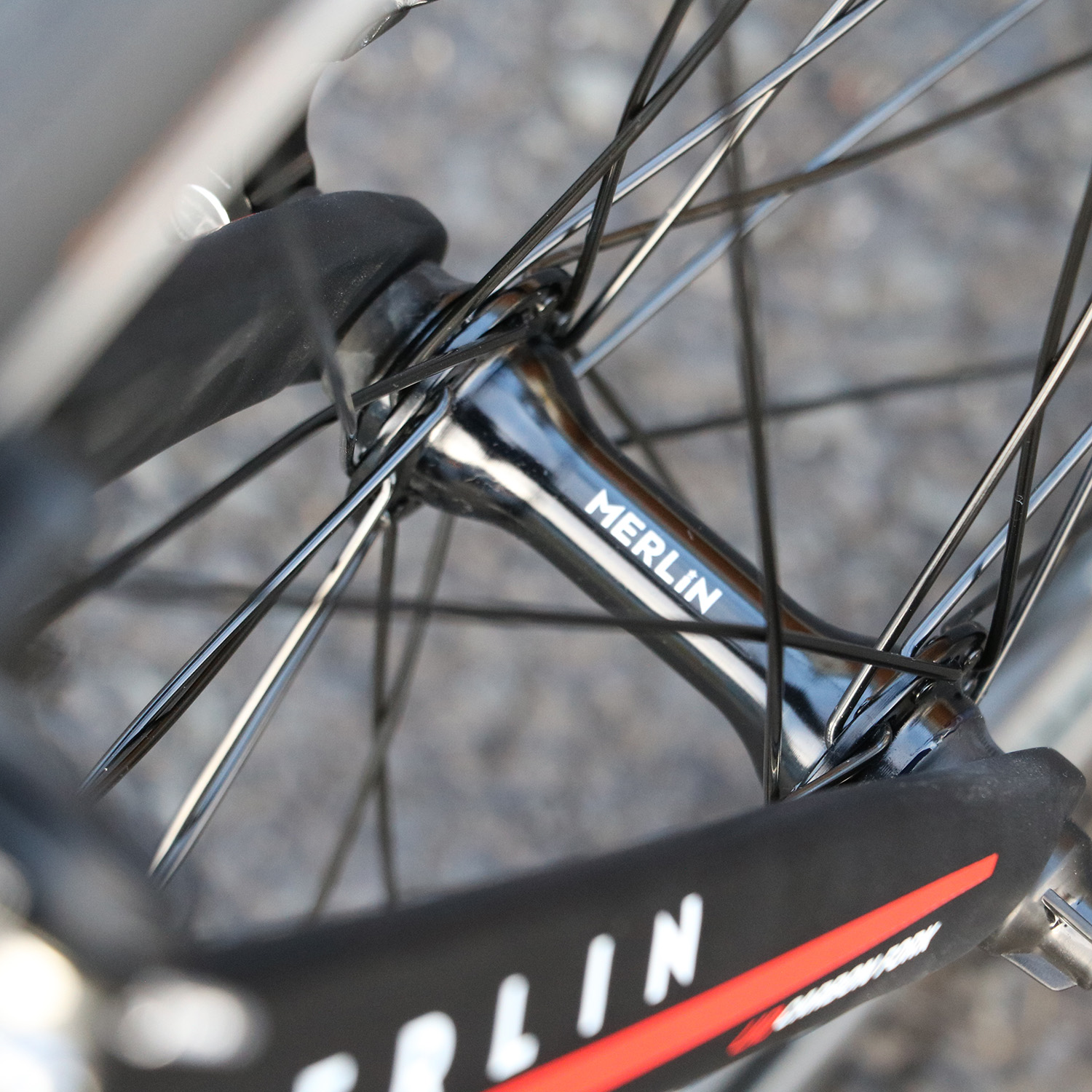
Never Had it So Good
As with bikes in general, the wheel market is ever-changing and developing as advancements in research, technology and materials come along. Wheels, like the rest of our bikes, just keep getting better. Competition between manufacturers leads to improvements which deliver noticeable benefits out on the road. Compared to wheels from the 80’s and 90’s, the latest deep and wide aero wheels transcend engineering and almost enter the realms of Harry Potter’s dark arts. Equally, all-rounder wheels priced under £200 can offer light, reliable and fast ride characteristics whilst being more financially accessible.
That’s the good news. The bad news comes you add up the ideal features in the perfect, do-it-all wheelset, typically;
Aerodynamics – for flat rolling speed Light Weight – for climbing & acceleration
Durability – for our not fabulous UK roads Stiffness – for sprinting & power transfer
Tick all of the above boxes for your wheelset purchase and you will notice a huge hole appear in your bank account. Keith Bontrager’s well used quote, “Strong, Light, Cheap – Pick Two” summarises the issue with wheels almost perfectly. Given that the ultimate ‘Do Everything Perfectly’ wheel is beyond the financial reach of many of us, it is worth thinking about what we actually need?

Needs Must
Think about your usual rides; Hilly? Flat? Fast & short? Long & slow? Rough roads? Smooth roads? Is this your only wheelset? Looking at how and where you ride is a good place begin your new wheel search – if you live in a particularly hilly area, deep carbon wheels might not be the best option. Likewise if you live in the flatlands there is little merit in buying lightweight climbing wheels.
It is worth, therefore considering what key elements effect how a wheel actually performs. Rims are the most noticeable part of the wheel and have the biggest effect on performance. Rims feature a whole range of variables;
Tyre fitment type
Three options are available; Tubular tyres offer light weight and are still favoured by top-level riders – they don’t have to worry about fitting or replacing… Tubulars can be a pain to glue flat to the rim and can be an even bigger pain when they puncture. However, tubular rims are lighter. Clinchers today offer almost the same performance as tubular tyres, but are easy to fit and not too fiddly when they puncture. Clincher wheels tend to heavier than a comparable tubular wheels because the rims require more material at the top of the braking surface to hook the clincher tyre to the rim. Tubeless is the third option, imported from the world of MTB. Tubeless specific rims hold the air in, a valve is inserted into the valve hole. To prevent punctures, tubeless tyres can be used with liquid sealant which goes into the tyre to help immediately seal small punctures. However tubeless tyres can be a tighter fit on the rim and much harder to install or remove, there are also a limited range of tyres available for tubeless rims.
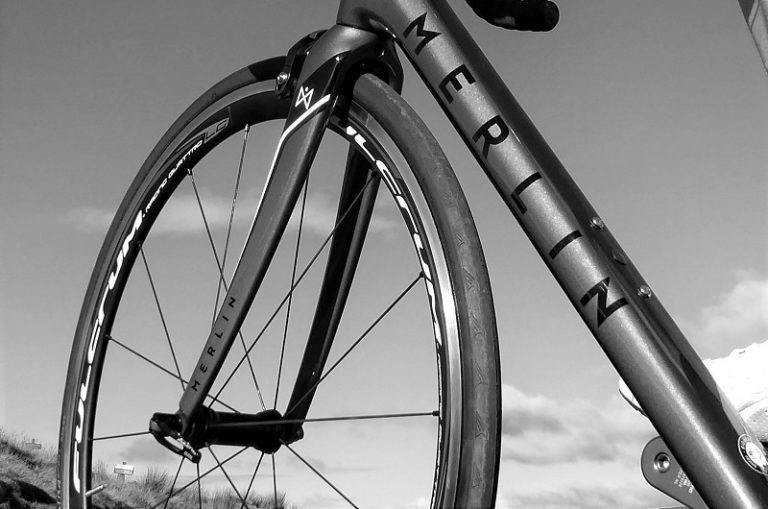
Rim Material Options
Aluminium
Rims manufactured in aluminium are generally reliable, fairly lightweight and cost-effective. The deep section aluminium rims of the 1990’s were not so popular, largely because of their weight. When the Gewiss pro team took the top three places in the 1994 La Fleche Wallonne on 1.9kg (pair) Campagnolo Shamal (Deep Aluminium) wheels they had a significant amount of chemical assistance. There are plenty of very high quality shallow to mid-section aluminium rimmed wheels available, suitable as training, all-rounder or climbing wheels at the top end. Aluminium rims offer consistent braking under all conditions and are usually relatively easy to keep true and replace spokes.
Carbon Fibre
The lightness and strength of carbon fibre makes it almost ideal for making deeper rims. Deep carbon rims generally require less watts of power on the flat at speeds over 20 mph than shallow aluminium rims. In addition deeper rims reduce the length of spoke needed, which makes for a stiffer wheel; Great for acceleration & power transfer, bad for rougher road surfaces. However, lots of people are swayed towards deep carbon wheels for none scientific reasons; they sound nice and can make just about any bike look faster. Shallow depth carbon climber wheels can be exceptionally light, these are really suited to specialist climbing, they also offer rapid acceleration.
Carbon & Aluminium
Another current rim construction option is to use an aluminium rim with a lightweight carbon fairing bonded to it. Mavic pioneered this way back in the late 1980’s with their CXP25 time trial rim (see below). Several manufacturers employ this method today with deep rims including Mavic and Hed. Another aluminium / carbon option is Shimano’s CL (Carbon Laminate) range, they feature a light aluminium rim, strengthened with a layer of carbon in a shallow (21/23mm) profile or in 35mm section deeper profile. This results in a strong lightweight wheel in the case of the shallower CL wheels. Carbon / Aluminium wheels offer reliable, consistent braking in all conditions and can be used with standard brake blocks.
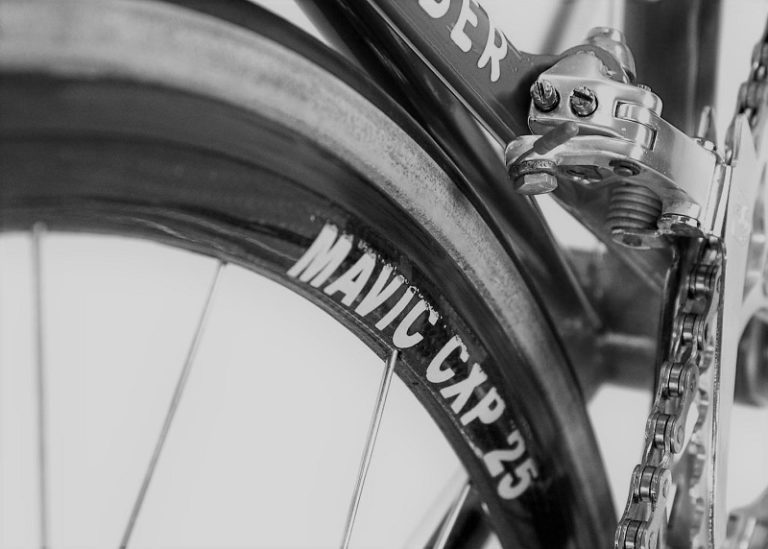
Mavic CXP 25 Rim photo courtesy of Steel-vintage.com
Rim Depth
Wheel rim depth goes from shallow (less than 30mm) through to deep (up to 100mm). Shallower rims can be lighter and have more ‘give’. Deep rims are more aerodynamic but can give a harsher ride, especially noticeable on rougher road surfaces. Mid depth wheels are popular because they can offer the best characteristics of both shallow and deep rims.
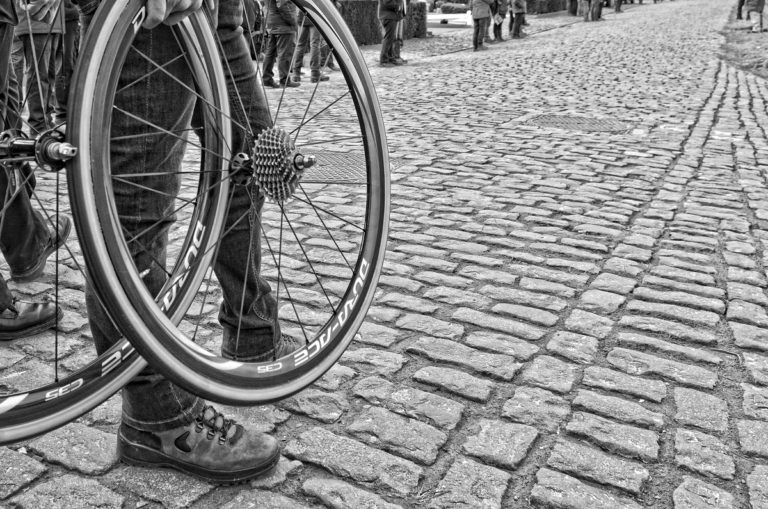
Rim Braking Surface
Carbon mid and deep section rims can have a carbon or an aluminium braking surface. Full carbon is lighter, but braking can be more unpredictable. Carbon specific brake pads can greatly reduce braking unpredictability. All rim surfaces and brake pads should be kept clean – grit or flint can easily gouge the surface of the rim. Aluminium braking surfaces offer consistent reliable braking in all conditions, but add weight and a join to a carbon / aluminium wheel, compared to a full carbon wheel.
Rim Width
The last few years have seen a move towards wider rims to match wider tyres. Rims with 23mm – 28mm rim outside width, matched with wider tyres, ride with more comfort than traditional narrower rims & tyres of 18-21mm width. Wider rims can run lower tyre pressures with no adverse effect on performance. Studies suggest that wider rims and tyres can offer a reduction in rolling resistance. This is because the contact area with the road is shorter and wider than that found with a narrow rim and tyre. Rim width effects the shape and width of the tyre – an OCD satisfying flat edge can be had with a 25mm tyre mounted on a 25mm rim, as well as looking good, it’s smooth joining edge between rim and tyre will cut through the air nicely too.
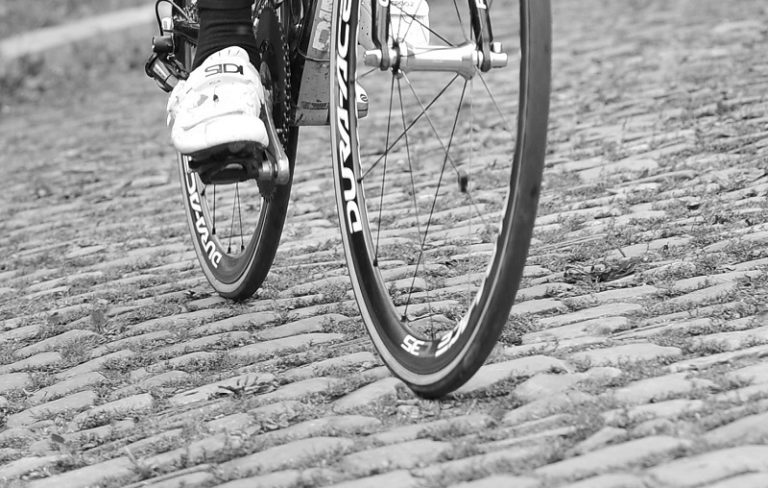
Rim Shape
The shape of the rim has a larger effect on deep wheels. When deep section carbon wheels appeared in the early 1990’s, they featured an almost sharp, flat sided V section. The flat sided V shape rims used to catch cross winds more than shallow, traditional rims. The V section remained until manufacturers such as Zipp and Hed, began to experiment with toroidal and U profile wheels. Many modern deep rims are now a smoothly rounded U shape. Tests suggest that the U shape makes the rim less susceptible to cross winds and improves aerodynamics in a range of real life wind conditions.
Spokes
Spokes are the essential link between rotating mass of the rim & tyre and the rest of the bike. The number of spokes often varies between front and rear wheels. The rear wheel often features more spokes to cope with the power transfer from the cassette to the rim. More spokes usually means a stronger wheel but the trade-off is a slight weight penalty and a slight aerodynamic disadvantage. Most spokes are still manufactured in steel. They come in different shapes to either aid strength or help aerodynamics. Most spokes fit into a nipple which is like a specially shaped nut – it is used to fix the threaded end of the spoke to the rim and for adjusting tension, truing and replacing spokes. Nipples can be hidden in deep wheels to help with aerodynamics (nipples can still be accessed under the rim tape).
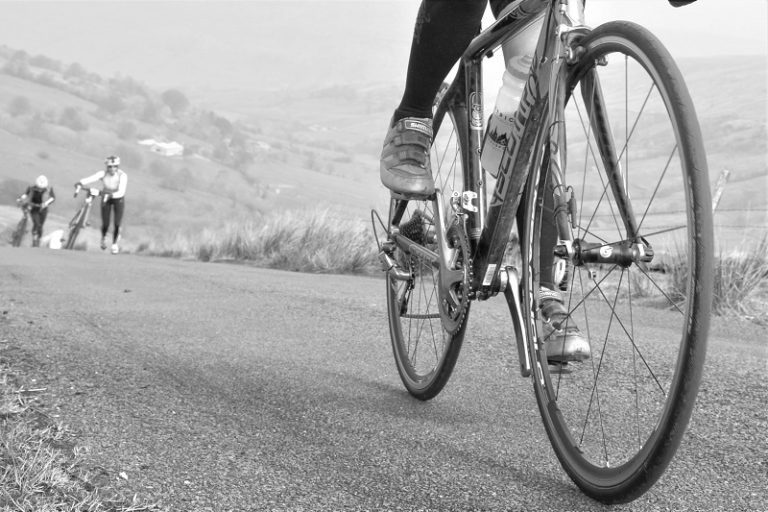
Hubs
Hubs are at the centre of the wheel. Rear hubs often feature a larger flange (where the hub body meets the spokes), this improves rear wheel stiffness by reducing the required spoke length. Hub bearings are either angular cup & cone or cartridge bearings. Top quality hubs can feature ceramic bearings which offer lower friction over their steel counterparts. The freehub body comes fitted to the hub, there are two alternatives depending on what groupset components you use, Campagnolo or Shimano (also fit Sram). Campagnolo wheels come with either Shimano or Campagnolo cassette freehub fitment. Shimano wheels will only fit Shimano (& Sram) cassettes. If you are running older 8/9/10 speed set ups, you will need to use spacers on current 11 speed wheels.
Build
The way that the components are assembled can have an effect on the built wheel. While wheels are often described as ‘factory built’, many of these are still at least part built by human hands. Most manufacturer’s mid-range and top end wheels are reliant on people with skill and experience to make them. An experienced wheel builder can expertly build equal tension through the spokes as well as perfect radial & lateral alignment into a wheel, ensuring that the wheel will last. Whether the wheel is fully factory built, finished by hand, or fully hand-built by a wheel builder, modern wheels are generally better than their predecessors. This is because wheel components have improved. Today, even more inexperienced wheel builders can get decent results through using tension gauge meters, making the build more precise and consistent.
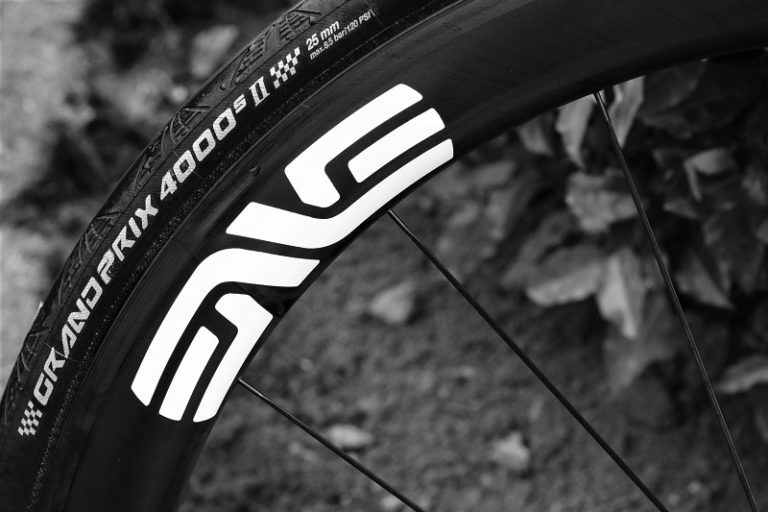
Conclusion
Before making your purchase, ask fellow riders for opinions, read test reports and reviews. If you are upgrading a stock bike, remember bikes can roll out of the manufacturer’s gate with slightly below par wheels. Upgrading from factory spec’ wheels can noticeably boost performance. Deep carbon wheels can improve average speeds on the flat. However, it’s worth remembering that they only start to aid performance over 20 mph. If you seldom ride over 20mph on the flat, or live in a hillier area, then lighter, shallower wheels might be a better option. If you are a heavier rider or have particularly bad road surfaces to contend with, consider wheels with more spokes combined with wider rims / tyres for added comfort and durability. Once you’ve narrowed down potential choices, buy the best wheels your budget will allow, suitable for your style of riding.
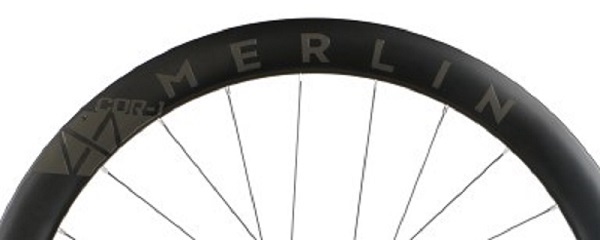
Merlin Wheel Range
Our own Merlin brand wheels start with the budget RA-1 clincher wheelset, ideal for general riding, they feature reliable cup & cone hub bearings and a 21mm wide 25mm deep aluminium rim. Full details here.
Merlin own brand disc brake wheels are ideal for todays disc braked road and gravel bikes – full details here.
Factory Built disc Road Wheels
